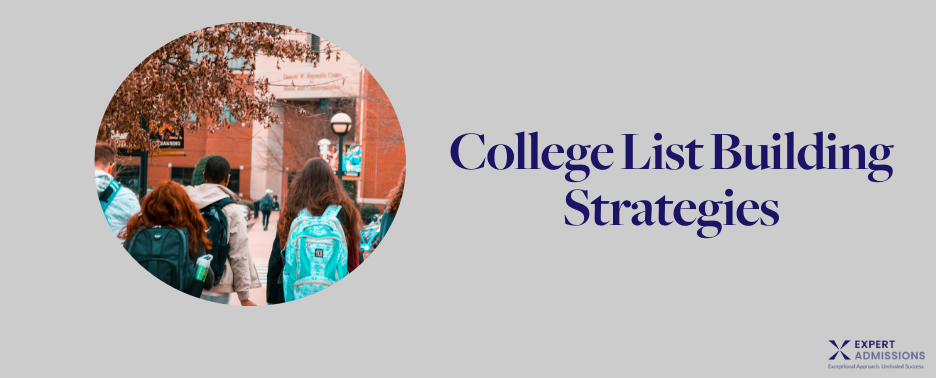
With thousands of colleges and universities in the US alone, deciding where to apply can be overwhelming. Even with all those options, we recommend that students apply to only 8-10 schools. This is enough to add some likely acceptances to the list while still ensuring that you’ll be happy at any of the places you’re accepted. There are two main factors that go into building your college list: range and fit.
“Range” refers to the numbers. We pay particular attention to the GPA and test scores of the middle 50% of admitted students, as reported by each college. This information is published in many different college guidebooks and is also available online. Based on the numbers and the selectivity of the colleges you’re interested in, you can get an initial gauge of your chances for admission.
A good college list will include some safer, target, and reach schools in order to maximize your chances of being accepted to a school that fits your wants and needs. Of course, try to keep your expectations realistic. Highly selective colleges are never safer schools, even if your numbers are at the top of their range, and your reach schools are, by definition, less likely to work out. But of course, it’s worth applying to colleges you really love.
If your own numbers are right on the cusp of the school’s range and you can make a good case for fit in your essays, we call that a “smart reach,” and it might be the ideal place to apply Early Decision.
Remember that test-optional policies have also changed the way we think about the numbers. With the option not to submit scores, the scores in that mid-50% range have gone up, and what might have been a great score a couple of years ago might not cut it now. You’ll want to be mindful of what the ranges are and make strategic decisions about if and where you submit test scores.
That brings us to fit. As much as we might love for college admissions to be an exact science, the numbers alone don’t guarantee acceptance. Schools that review applications holistically will also consider essays, supplements, recommendations, and extracurricular activities to see if there’s a good fit between your interests and values and what the existing campus community has to offer.
But this isn’t just about proving yourself to a college! It’s about what you want. Every school on your list should be there for a reason; you should see yourself there so you can make a compelling case that lets admissions officers see you there too.
So ask yourself, what do I want? Do some serious research to find out if your interests, values, and identity are supported by the campus culture. For example, you might be looking for a service-oriented student body, a thriving LGBTQ+ community, or a specific major that’s not available at most colleges. The better your research is as an applicant, the better your essays will be, and the better your results will be.
Even after an initial round of research, you might find that a lot of schools look similar on paper, so you’ll need to figure out what the real differences are. This is when talking to current students is invaluable. If you don’t know any current students through friends or family, have a look at the websites for student-run clubs that you might be interested in; there’s usually a “student contact” that you can reach out to. Talking to students who aren’t working in admissions will get you the most unfiltered opinions on what they love about the school and what they’d like to change.
With colleges engaging more on Instagram, in virtual tours, and in online Q&As, there’s plenty of information out there. Some introspection can help you sift through it to prioritize what’s most important to you and find the schools that will be most responsive to your profile.
Leave a Reply